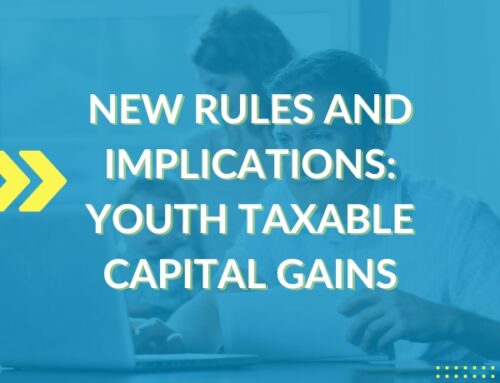— May 22, 2024 —
With April 2024 and its busyness behind us, attention has turned to the upcoming changes in capital gains taxation. Effective June 25, 2024, it is expected that the capital gains inclusion rate will increase from one-half to two-thirds for corporations and trusts, and for individuals on gains exceeding $250,000. While draft legislation is still pending, here are some insights from some of Canada’s leading tax experts to help you navigate these changes. If you haven’t yet focused on the impact of these changes, the strategies and considerations outlined here will provide a solid starting point.
Impact on Effective Rates and Integration
The increase in the inclusion rate disrupts the long-standing concept of integration for capital gains earned through Canadian Controlled Private Corporations (CCPCs). For individuals, the tax cost on capital gains through a CCPC will rise by approximately 8.5% to 10%, depending on the province. The response to the increase in the inclusion rate from provinces and territories is still uncertain. The temptation to follow the federal lead may be too great, further increasing the tax burden.
Planning Opportunities
- Transfer of Assets
To take advantage of the current lower inclusion rate, taxpayers can crystallize accrued capital gains before June 25, 2024. Here’s a practical approach:
Crystallizing Gains through Asset Transfers
To trigger capital gains before the June 25, 2024 increase in the inclusion rate, taxpayers can transfer appreciated assets to a taxable Canadian corporation. This involves a taxable transaction where the fair market value (FMV) is elected as the proceeds of disposition, rather than adjusted cost base (ACB). Subsection 85(1) can be used to crystallize gains by electing an amount between the asset’s adjusted cost base (ACB) and FMV, thus recognizing the desired gain at the current 50% inclusion rate. For example, transferring shares with significant unrealized gains to a corporation and electing at FMV ensures the entire gain is realized at the lower rate. Ensure proper documentation and timely filing of the election to avoid penalties.
GAAR Considerations
Although the CRA has indicated that crystallizing gains to benefit from the current inclusion rate should not invoke GAAR, ensure that transactions are not part of a series designed for broader tax avoidance.
- Share Exchanges
Taxpayers can, of course, crystallize capital gains by exchanging shares they hold for different classes of shares within the same corporation. By properly structuring this exchange, it is possible to trigger a capital gain at the current lower inclusion rate before the increase on June 25, 2024.
Different Options for Share Exchanges:
A share exchange structured using a subsection 85 election, can allow a taxpayer to choose an amount that triggers a gain. This can help in realizing gains at the lower inclusion rate before the new rate takes effect.
Section 51 is another option, which can be used to a taxpayer’s advantage with careful planning. Taxpayers can exchange, for example, convertible debentures for shares on a tax-deferred basis. The newly acquired shares can then be used to trigger a capital gain at the lower inclusion rate before June 25, 2024, if desired.
Section 86 applies to corporate reorganizations where shares of one class are exchanged for shares of another class triggering capital gains, in the process, at the lower inclusion rate.
GAAR Considerations
As has already been mentioned, where share exchanges are deployed to crystalize accrued gains, ensure the transactions are well-documented including a legitimate business purpose to avoid possible GAAR implications.
- Net Capital Loss Carryforward Balances
Taxpayers anticipating substantial capital gains after June 24, 2024, could consider the strategic use of net capital loss carryforward balances. By holding onto these losses and applying them against future gains, taxpayers could offset gains at the new higher inclusion rate of two-thirds, thus minimizing the impact of the increased tax burden.
To maximize the use of net capital losses, assess the taxpayer’s portfolio to identify potential capital gains that may arise after June 24, 2024. Where the taxpayer has net capital losses, consider holding these balances and applying against these future gains. In utilizing losses to offset against capital gains realized after the inclusion rate increases, the value of these capital losses is maximized by offsetting future capital gains subject to the post-June 24 inclusion rate.
Considerations for Planning
Present Value of Tax Savings: Prepay Now vs. Pay Later
A cost-benefit analysis may be needed to compare the net present value of paying tax now at the lower rate versus in the future at the higher rate. Consider the following example.
Example Breakeven Analysis
Let’s assume a taxpayer has an accrued gain of $100,000 and is subject to a tax rate of 53.53%, earning an after-tax rate of return of 3% per year. The inclusion rate for capital gains is 50% before June 25, 2024, and 66 2/3% thereafter. Pre-June 25, 2024, the taxable gain would be $50,000 (50% of $100,000), resulting in a tax liability of $26,765 ($50,000 * 53.53%). Post-June 24, 2024, the taxable gain would be $66,667 (66 2/3% of $100,000), with a tax liability of $35,683 ($66,667 * 53.53%). The tax savings by paying now is $8,918 ($35,683 – $26,765). To determine the breakeven point, a future value calculation shows it would take approximately 9.54 years for the tax savings to equal the future tax liability if the gain is deferred. Therefore, if the taxpayer expects to hold the investment for more than 9.54 years, deferring the tax payment may be beneficial. If the investment is expected to be held for less than 9.54 years, it is more advantageous to pay the tax now at the lower inclusion rate.
Sale Transactions
- Capital Gains Reserve: Forgoing a reserve claim this year to realize full gains at the lower rate might be beneficial.
- Earnout Agreements: Structuring earnouts as reverse earnouts ensures maximum capital gain is taxed in the current year at the lower inclusion rate.
Unintended Consequences
Triggering capital gains at the current inclusion rate of 50% to avoid the higher rate of 66 2/3% can lead to several unintended consequences. These include triggering other taxable events such as recapture, immediate tax payment and potential cash flow issues. There is also increased audit risks to consider. Legal approvals might be required with tight time constraints and resulting in additional costs. GAAR implications could arise if transactions appear primarily tax motivated. Interaction with other tax provisions, such as the AMT and loss of other tax benefits, can also occur as well as administrative penalties for late filings or interest on unpaid instalments. Additionally, relationships with stakeholders might be impacted, and land transfer taxes could be triggered in property-related transactions. Finally, estate planning strategies might be disrupted, necessitating revisions and potentially leading to additional estate tax liabilities.
A Final Comment
Proactive planning is essential given the upcoming increase in the capital gains inclusion rate. Ensure your clients understand these strategies and the potential unintended consequences. At AJAG, we’re committed to keeping you informed and prepared for these changes. For more detailed guidance on this subject, register here for our upcoming course featuring Kim Moody, FCA, TEP, Director of Canadian Tax Advisory at Moodys Tax Law LLP, and Jay Goodis, CPA, CA, CEO and Co-Founder of Tax Templates Inc.
Navigating the Shift in Capital Gains Taxation – Course + Q&A
Online Live: May 28th at 2 PM EST
Online Recorded: Available as of May 30th
Rely on AJAG as your resource for staying up-to-date with the latest developments in the Canadian accounting profession and navigating complex tax changes effectively.






